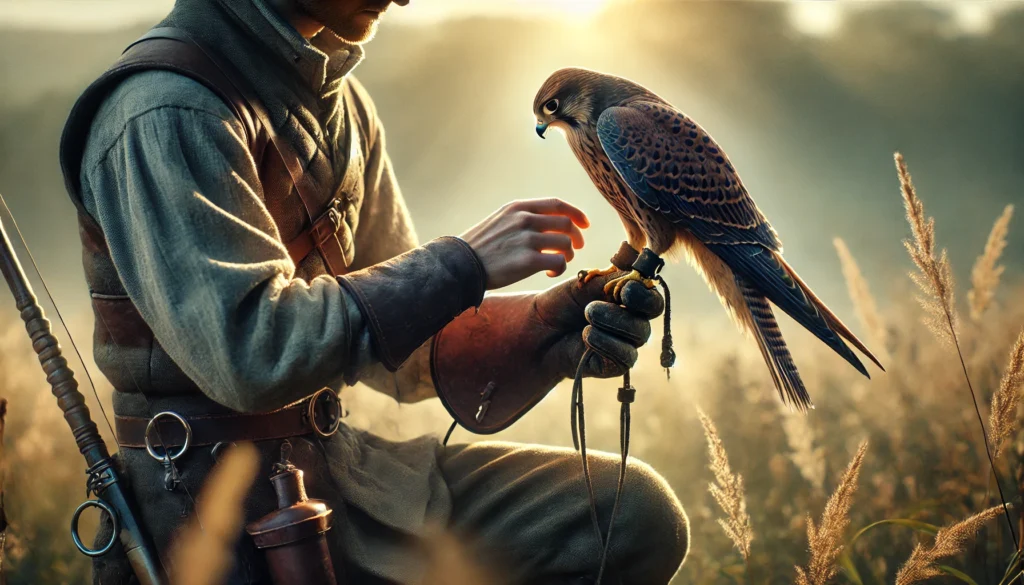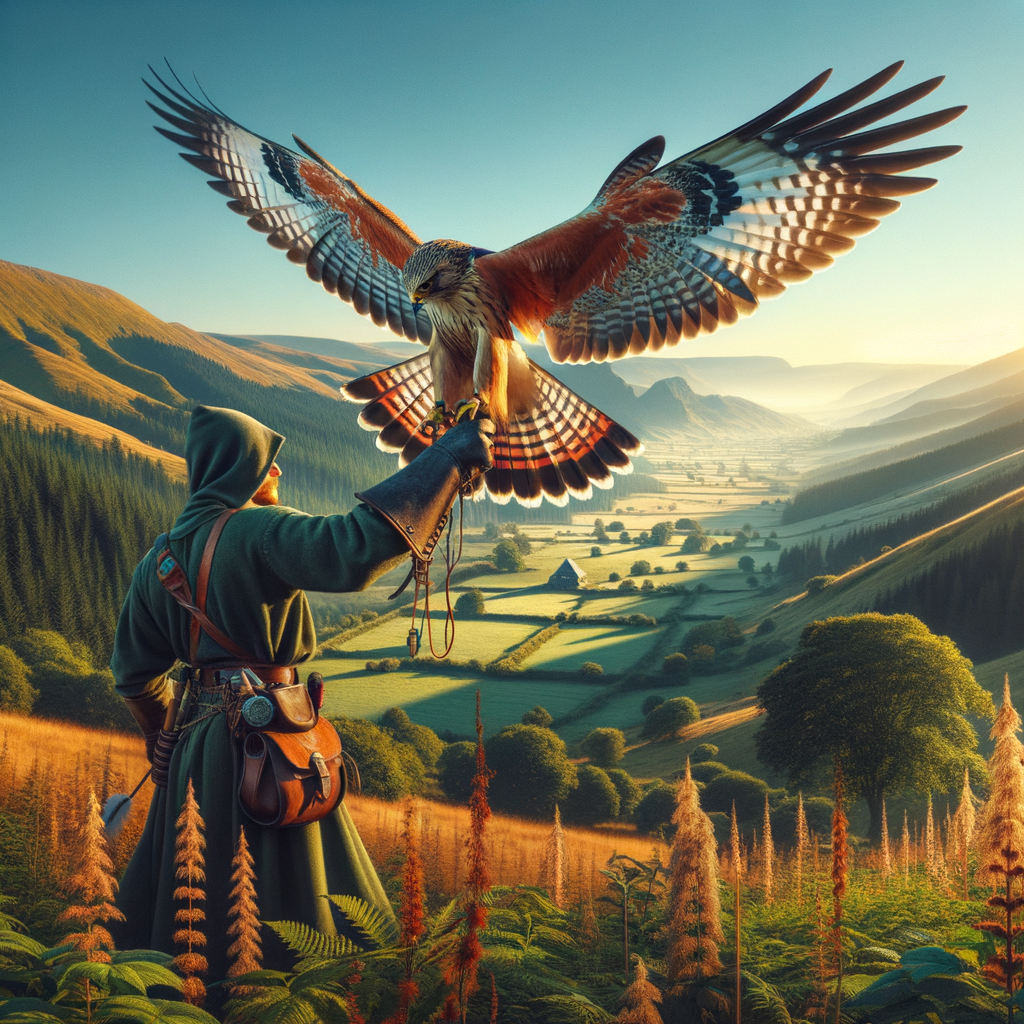Discovering Central Asian Falconry
- Falconry is an ancient tradition in Central Asia.
- It dates back thousands of years and is a respected cultural practice.
- Birds of prey, like falcons, are trained for hunting.
- This practice is an important part of Central Asian heritage.
- Falconry combines skill, patience, and deep respect for nature.
- Central Asian falconers use specific techniques passed down through generations.
- They often hunt various animals, including rabbits and foxes.
- Falconry fosters a strong bond between humans and birds.
- It also plays a role in community events and festivals.
- Central Asian falconry emphasizes conservation and ethical treatment of birds.
- The practice is recognized by UNESCO as an Intangible Cultural Heritage.
Join us at Learn Falconry to explore this incredible tradition and connect with the rich history of Central Asian culture!
Discovering the Magic of Falconry in Central Asian Culture
Imagine Ireland without its enchanting tales of fairies, leprechauns, and mystical folklore. It just wouldn’t be the same, would it? Similarly, Central Asia’s rich cultural heritage wouldn’t be complete without the ancient art of falconry. Welcome to Learn Falconry, where we embrace the beauty and tradition of this timeless practice that still soars high in the skies of Kazakhstan, Kyrgyzstan, and beyond.
Falconry isn’t just about training birds to hunt; it’s a living connection between humans and nature, etched into the very soul of Central Asian life. The rhythm of a falcon’s wingbeat and the strong bond between bird and trainer are like the pulse of timeless stories passed down through generations, much like the treasured Irish legends. Through falconry, you can glimpse the wisdom, resilience, and harmony that Central Asians have celebrated for centuries.
In this captivating article, we’ll take you on a journey through the majestic landscapes of Central Asia, exploring how falconry is interwoven with the region’s history, traditions, and daily life. You’ll discover why this ancient practice is still cherished today and how it reflects the deep respect for nature that defines Central Asian culture. So, sit back, relax, and let’s soar together into a world where tradition, mastery, and the natural world intersect in the most extraordinary way. Keep reading to uncover the fascinating stories that make falconry a precious jewel in Central Asia’s cultural crown.
The Rich History of Central Asian Falconry
Falconry is an ancient art that has been practiced across different cultures and regions, but one area where it holds a particularly prestigious place is in Central Asia. Central Asian falconry, or the training and hunting with birds of prey, has deep cultural roots that stretch back thousands of years. This article will explore the fascinating world of falconry in Central Asia, shedding light on its history, traditions, and practices.
A Historical Overview
Falconry in Central Asia is not just a sport; it is a rich cultural tradition that has been handed down through generations. It’s believed that the origins of falconry can be traced back to the steppes of Central Asia, where nomadic tribes began to use falcons and other birds of prey to hunt for food. This practice was not only a means of subsistence but also a symbol of status and warrior prowess.
For more on the historical significance of falconry, check out our in-depth history of falconry.
The Significance of Falconry in Asian Culture
Falconry in Asia, particularly in Central Asia, carries deep cultural significance. Birds like the Saker falcon and the Golden eagle are not just hunting partners but are also considered sacred animals. In many cultures, training a falcon is seen as a rite of passage for young men, symbolizing their transition into adulthood. The training of these majestic birds requires skill, patience, and a deep understanding of nature.
Techniques and Equipment
The techniques and equipment used in Central Asian falconry are unique and steeped in tradition. For instance, falconers often use specialized hoods to keep their birds calm and equipped with bells to track their movements. The methods of training vary but generally include positive reinforcement techniques.
Learn more about the different types of equipment used in falconry on our falconry equipment page.
Living Tradition and Modern Practices
While falconry in Central Asia has ancient roots, it is still very much alive today. Modern falconry techniques incorporate elements from traditional methods but also utilize advanced technology like GPS trackers and drones for training and monitoring.
Discover how falconry has evolved over the years by visiting our page on modern falconry techniques.
Conservation and Ethical Practices
Falconry in Central Asia also plays a significant role in wildlife conservation. Falcons and other birds of prey are often bred in captivity to ensure their survival and are sometimes released back into the wild as part of reintroduction programs. Conservation efforts help maintain the delicate balance of the ecosystem.
If you are interested in the role of falconry in conservation, you can learn more on our falconry and conservation page.
Conclusion
The art of falconry has been a central aspect of life in Central Asia for centuries. Its rich traditions, specialized techniques, and significant cultural importance make it a fascinating subject for anyone interested in history, culture, and wildlife conservation. To delve deeper into this incredible tradition, explore our full range of resources on Learn Falconry.
The Rich Tradition of Falconry in Central Asia
Historical Roots and Cultural Significance
Falconry has a rich and ancient history in Central Asian culture. This practice dates back thousands of years and has been an integral part of the region’s heritage. In Japan, for instance, falconry is closely tied to the prestige of the emperor and symbolizes success in agriculture. The Saker Falcon, Golden Eagles, and other birds of prey have been celebrated in various cultural festivities, such as Mongolia’s Golden Eagle Festival, which showcases the art of hunting with these majestic birds.
Wildlife Conservation and Challenges
In 2024, the Saker Falcon faces significant threats and is listed as Endangered on the IUCN Red List. Its population has been rapidly declining due to several factors:
- Electrocution on Power Lines: Birds often suffer electrocution when they perch on power lines, leading to fatal accidents.
- Illegal Trade and Poaching: The illicit capture and trade of falcons for the falconry market pose a severe threat to their populations.
- Habitat Degradation: Agricultural expansion and habitat destruction contribute to the decline of these species.
- Impact of Agrochemicals: The use of pesticides negatively affects bird populations, leading to further decline.
Conservation Efforts
Various conservation efforts are underway to protect and preserve these magnificent birds. The Central Asian Flyway Situation Analysis 2023 emphasizes the need for robust conservation frameworks under the Convention on Migratory Species (CMS) to support the habitats of migratory birds. Additionally, forums like the Falcon Day International Forum work towards the awareness and sustainability of birds of prey, including the conservation of the gyrfalcon population.
Modern Practices and Global Recognition
In modern times, falconry continues to be practiced widely across Central Asia. For instance:
- Kazakh Culture: In Kazakhstan, falconry with eagles is considered an art form and is promoted as a significant tourist attraction.
- Kyrgyzstan: Hunting tours, including falconry excursions, are offered to tourists, capturing the essence of this ancient tradition.
Falconry has also gained global recognition as part of UNESCO’s “Living Human Heritage,” highlighting its continued importance and value in modern cultural exchanges.
Examples of Falconry in Popular Events
An example of falconry’s inclusion in popular culture is “The Eagles of the Ramparts” show in Provins. This event features horseback falconry, showcasing the agility, speed, and majesty of various birds of prey like eagles, hawks, and falcons. Running from March to October 2024, it illustrates falconry’s immersive and captivating appeal to audiences.
Summary of Key Points
| Aspect | Details |
|---|---|
| Historical Roots | Thousands of years of heritage in Central Asia, Japan, Mongolia |
| Threats | Illegal trade, electrocution, habitat degradation, agrochemicals |
| Conservation Efforts | Central Asian Flyway, Falcon Day International Forum |
| Modern Practices | Kazakhstan’s cultural tourism, hunting tours in Kyrgyzstan |
| Global Recognition | UNESCO’s living human heritage |
| Popular Events | “The Eagles of the Ramparts” show |
These facets of falconry in Central Asia underscore its deep cultural significance and the ongoing efforts to preserve this ancient practice amidst modern challenges.
Falconry’s Importance and Conservation in Central Asian Culture
Falconry holds a deep historical and cultural significance in Central Asia, dating back thousands of years. However, the practice faces significant challenges in 2024. Illegal trade and poaching have put a strain on falcon populations, especially the endangered Saker Falcon. Conservation efforts are crucial, as these majestic birds face threats from habitat degradation, electrocution on power lines, and unsustainable capture for the falconry trade.
Despite these challenges, there are ongoing efforts to protect and preserve these birds. Events like the Falcon Day International Forum and initiatives to safeguard the gyrfalcon population highlight the global recognition of falconry’s value and the need for sustainable practices.
Let’s work together to support and celebrate the rich tradition of falconry while ensuring the protection of these incredible birds for future generations.



